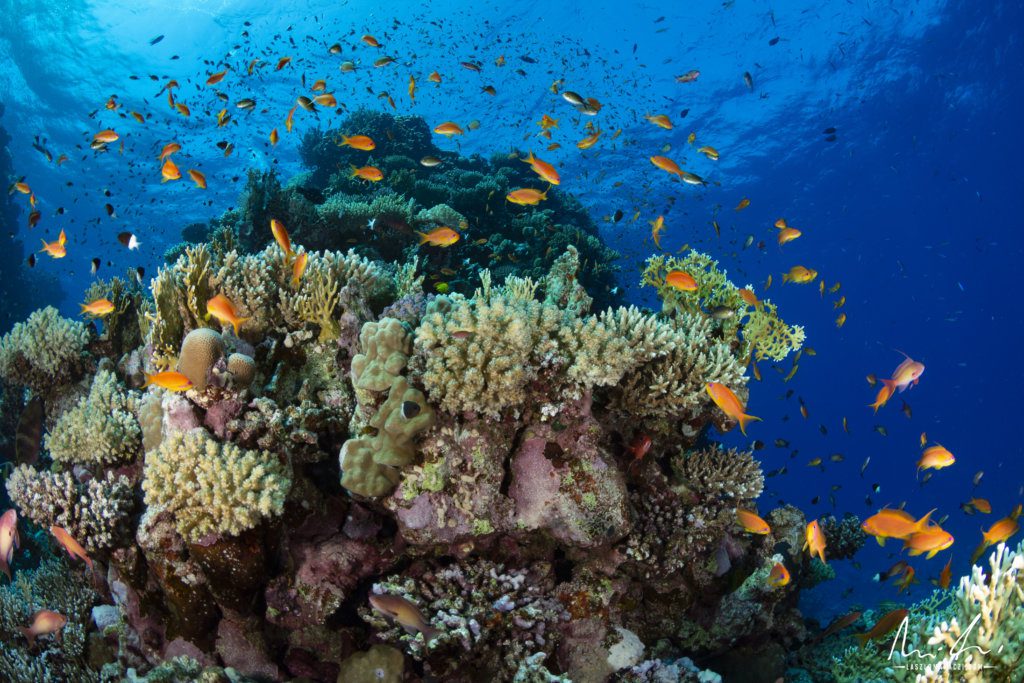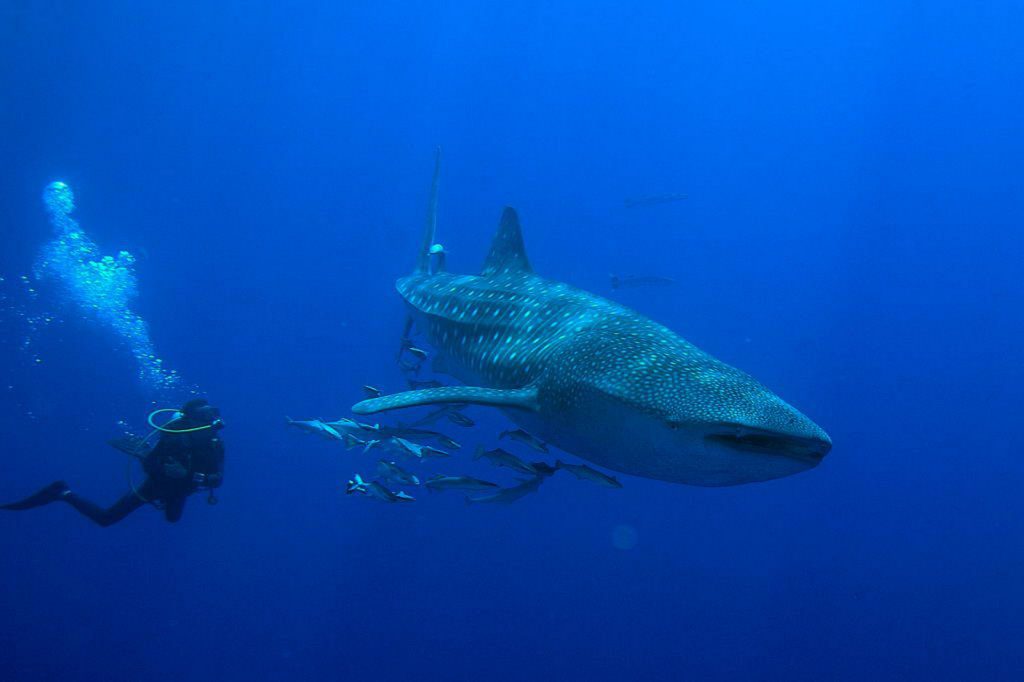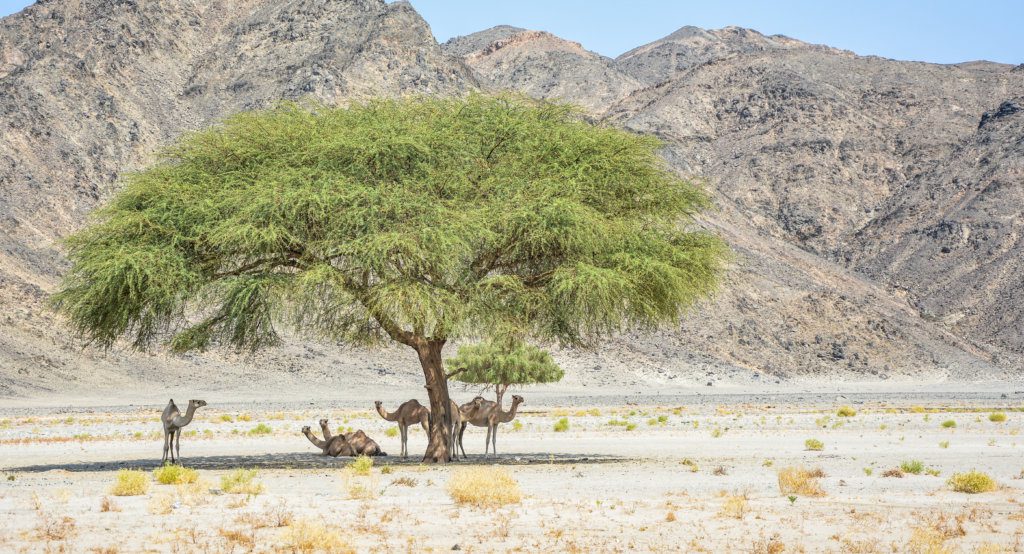Nature Encounters at the Red Sea and in Egypt’s Eastern Desert
By • October 29, 2020 One Comment 3009

Dreaming of travel during the pandemic is a great way to get away in our minds, but now’s the time to start planning. Here is some inspiration …
Marsa Alam is a travel destination on the Red Sea in the southeast of Egypt with spectacular nature. Because Marsa Alam is at a far distance from the resort towns in the north, its habitat is well preserved and it has a quiet atmosphere. This makes it ideal for stargazing, scuba diving to see the Red Sea’s diverse marine life and going on safari in the Eastern Desert and the Red Sea mountains. As time passes with intact nature in a quiet ambiance, one is gently swept into a mood of inner serenity.
The Arabic word “Marsa” means port; “Alam” means flag.
The Red Sea is one of the best destinations for diving in the world. “Something that has amazed me since my first dive in the Red Sea is its great visibility. Because it rarely rains in the region, the water carries few particles that affect the visibility. I find this astonishing, every dive again,” says Arthur Bos, associate professor of marine biology and ecology and chair of the biology department at the American University in Cairo.
The view underwater, with this clarity, is of Technicolored coral reefs and various species of sea creatures — the greatest variety among all seas. The Red Sea’s healthy coral reefs make an optimal living space for sea creatures. Because the Red Sea is shallow (with an average depth of 200 meters), the temperature is two degrees Celsius higher than other seas, which enables heat to reach the surface, explains Sarah O’Gorman, executive marketing manager at the resort Red Sea Diving Safari. The light tidal current in the Red Sea is also ideal for coral feeding and breeding, she adds.
 Red Sea Diving Safari offers diving lessons at optimal diving sites as well as almost daily trips to swim with the dolphins at Satayah and Samadai Reefs, which are resting places for the dolphins. Diving at nighttime, when sea creatures emerge for hunting, is also available. Among their other activities are camel riding on the beach, kitesurfing and kayaking. A PADI Open Water diving course, a worldwide-recognized certification, lasts three to five days and is $471; one session of PADI diving is $85 and equipment rental is $36 per day. The website is redsea-divingsafari.com.
Red Sea Diving Safari offers diving lessons at optimal diving sites as well as almost daily trips to swim with the dolphins at Satayah and Samadai Reefs, which are resting places for the dolphins. Diving at nighttime, when sea creatures emerge for hunting, is also available. Among their other activities are camel riding on the beach, kitesurfing and kayaking. A PADI Open Water diving course, a worldwide-recognized certification, lasts three to five days and is $471; one session of PADI diving is $85 and equipment rental is $36 per day. The website is redsea-divingsafari.com.
For a distinctly clear view of a starry sky, Red Sea Diving arranges stargazing trips in the Red Sea Mountains in the Eastern Desert. The trip takes place in Brekah valley, on top of a hill where one is completely surrounded by the mountains. The sense of isolation into the mountains, with a starry sky above, is unparalleled. The tribe of the Ababda, the Bedouin community native to that region of the Eastern Desert, supervises the trip and provides transportation. O’Gorman explains that the lack of light and air pollution makes for a great clarity in a sky view, so much so that on most days it is possible to watch meteor showers. Per choice, stargazing can also take place on the beach inside Marsa Shagra Village. Trips cost $36. The website is desert-experiences.com.
Red Sea Diving allows visitors an immersive experience into the original culture of the place. Among the accommodation options are a royal or standard tent and a hut. Resorts are at three different locations: Marsa Shagra, Marsa Nakari and Wadi Lahami. Each has its advantage with regard to the nature of the diving site and, accordingly, a different diving concept. At Wadi Lahami, for example, the southernmost, diving is by speedboat at the Fury Shoals reefs, “a huge network of diving sites in pristine condition,” says O’ Gorman. A double standard tent costs $57 per night, a double hut $64 and a double chalet $89.
 Holiday Tours offers a one-day immersive trip in Wadi Gamal National Park in the Eastern Desert, where the Red Sea Mountains line a lot of the landscape in the distance inside the park. The trip is an opportunity for a genuine experience of the Ababda tribe’s nomadic way of life. A guide from the Ababda introduces visitors to the history of the region and their Bedouin community. The Ababda believe they first came to Egypt when the Arabs first arrived in the country, between 639 and 646. Guests are offered traditional Bedouin food. This consists of bread, called qors qabori, cooked under the sand, and goat meat that is either cooked on the rocks or under the sand. The Ababda also serve their traditional Gabana coffee, which is roasted on the rocks then ground, seasoned with ginger or cardamom and cooked in the Gabana pot. Trips are $95 per person per daytrip. Pickup is from Marsa Alam Airport or resort. The website is holidaytours.one.
Holiday Tours offers a one-day immersive trip in Wadi Gamal National Park in the Eastern Desert, where the Red Sea Mountains line a lot of the landscape in the distance inside the park. The trip is an opportunity for a genuine experience of the Ababda tribe’s nomadic way of life. A guide from the Ababda introduces visitors to the history of the region and their Bedouin community. The Ababda believe they first came to Egypt when the Arabs first arrived in the country, between 639 and 646. Guests are offered traditional Bedouin food. This consists of bread, called qors qabori, cooked under the sand, and goat meat that is either cooked on the rocks or under the sand. The Ababda also serve their traditional Gabana coffee, which is roasted on the rocks then ground, seasoned with ginger or cardamom and cooked in the Gabana pot. Trips are $95 per person per daytrip. Pickup is from Marsa Alam Airport or resort. The website is holidaytours.one.
 Another part of the trip is taking a look at the geological layer in the Red Sea Mountains, which reflect some of the Earth’s formational history. There are 600-million-year-old red granite rocks, which have striking morphology and are among the oldest on the planet.
Another part of the trip is taking a look at the geological layer in the Red Sea Mountains, which reflect some of the Earth’s formational history. There are 600-million-year-old red granite rocks, which have striking morphology and are among the oldest on the planet.
Inside Wadi Gemal Park, one can also visit the mines that supplied the Roman Empire with green beryl. According to “The Red Land: The Illustrated Archaeology of Egypt’s Eastern Desert” by Hendrikje M. Nouwens, Martin Hense and Steven E. Sidebotham, this area, known to the Romans as Mons Smaragdus (Emerald Mountains), was the only source of green beryl located inside their empire. Although there is a reference to emeralds in the name, the mines seldom supplied true emeralds, which have a deep green color, while Egyptian beryl is light green. Ancient authors such as Ptolemy, Strabo and Pliny the Elder reported that the mines were heavily exploited. In the sites around the mines, there are archaeological remains from the time of the Romans and later excavations that are believed to have lasted well into the 20th century. It is fascinating to look closely at these ruins and imagine the life that once existed there.
Ben Hoffler, co-founder of the Red Sea Mountain Trail — Egypt’s first long-distance hiking trail, located in Hurghada, 285 kilometers north of Marsa Alam — recommends “Bedouin Life in the Egyptian Wilderness” by Joseph Hobbs, as well as the above-mentioned book, to learn about the history and archaeology of the Eastern desert and its native Bedouin communities.
Hilton Marsa Alam Nubian Resort is located on Abu-Dabbab Bay, one of the best snorkeling sites in the world, according to Lonely Planet. Because of the abundant seagrass and shallow waters, the bay is an attraction to the rare dugongs. Many reviewers on TripAdvisor describe it as “a small paradise” with warm hospitality. Hilton’s menu is ample with Middle Eastern delights. A standard double room is $117.
If one chooses to reside at a different location than the above-mentioned ones, it is possible to schedule trips to go diving and sightseeing at these bays and certainly worth it to explore each bay. The travel time between these areas is one hour or less.
Getting there: Marsa Alam is about 700 kilometers from Cairo and is reachable via EgyptAir flights from Cairo International Airport. A two-way flight to Egypt starts at $750 and to Marsa Alam at $250. Egypt is one of the countries that currently allow entry to American citizens.
When to visit: The best months for traveling to Marsa Alam are September, October, November, March, April and May, when the temperature average is between 60 and 84 degrees Fahrenheit. In the winter months, the average temperature is 77 to 56 degrees.


Discovering the Eastern Desert of Egypt and the Red Sea was a once-in-a-lifetime event! Working with the best Egypt travel agency is a must for anyone planning a vacation in order to ensure an enjoyable trip. I am ready to return!